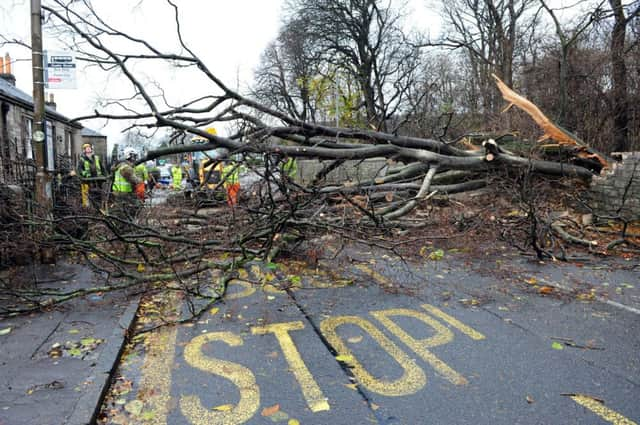Ill wind blowing for horticulture


THE start of another new year, and national news coverage has alerted us once more to the devastation caused by severe weather conditions around the country. It is often said that in Scotland we are obsessed with weather and this is perhaps no surprise when we can experience two, three or sometimes even four seasons in one day. Those who work on the land or at sea are yet more preoccupied with its vagaries as they are most affected by its impacts. So, what can we learn from changing weather trends?
As the curator of the “living collection” of plants at the Royal Botanic Garden Edinburgh (RBGE) I have concerns that the record weather extremes we have experienced in recent years could be the sign of more to come. These have included two of the coldest winters in a generation, in 2009-10 and 2010-11; the record wet summer of 2012 and the dry early spring/summers of 2012 and 2013. We witnessed, too, last year’s January storm-force gales, the cool - verging on cold - spring and a mild autumn.
Advertisement
Hide AdAdvertisement
Hide AdThe current description of our weather as being less predictable, with more extreme events, appears consistent with recent and continuing recorded rises in global temperature. All this resulted in the much-anticipated increasing rainfall and stormier weather we have experienced since early December.
Such unsettled weather – with a succession of low pressures and associated gale-force winds plus copious amounts of rain – have created problems for many across Scotland. For the four Gardens of the RBGE: at Inverleith, in Edinburgh; Benmore, in Argyll; Logan, in Galloway and Dawyck, in the Borders, this has included damage to infrastructure and uprooted or damaged trees on at least one of the sites after each successive gale.
Although all four Gardens are located in the southern part of Scotland, they each experience very different climatic conditions. This can be put into context using the record rainfall across Scotland in December as a yardstick. For example, the rainfall at Benmore, near Dunoon, was recorded as 531mm [20.9 inches], almost matching Edinburgh’s 585mm [23.03 inches] for the full year. More concerning, perhaps, is that the December 2013 rainfall at Benmore was the third wettest on record behind 1999 and 2011.
Conversely, across all four Gardens, it has been a relatively mild autumn and early winter with little or no discernible frost being recorded and a number of plants coming into flower two to three weeks ahead of their “normal” flowering period. However, on a note of caution, this is still early in the year and it could pay to remember that 2013 saw one of the coldest springs for a number of years. There is plenty of time left for winter weather
As manager of a plant collection that has been accrued over many centuries and curating plants that have been growing in the Garden for many decades, or longer, these subtle changes in weather – which may be a portent of what the future could hold – will require continuing re-evaluation of what species are grown where, both within in the individual Gardens and in terms of which of the four sites is deemed most suitable, so fully utilising the different climatic conditions available on each.
We are finding that the rainfall extremes also require drainage systems to be more than capable of coping with the increasing intensity of rainfall. At the same time there needs to be a contingency to help cope with the longer drier spells we have been experiencing in the spring and early summer and the ability to irrigate when required. The frequency and the intensity of winds have posed other problems. The long-term and far-reaching impact of tree loss also needs to be considered. Recent gales have highlighted the fact that, after the initial loss of shelter, there is a resultant continuing loss of further trees as the wind exploits new gaps in the canopy. Although new trees can be planted to replace those lost, the shelter they provide will be many years in the future.
Current and anticipated weather patterns will undoubtedly pose challenges that everyone in Scotland will have to meet and overcome. We are fortunate that the accuracy of the weather forecasts on a daily and weekly basis have never been better, affording much needed advance warning of severe weather. However, an awareness of – and ability to react to – the potential impacts of the longer-term trends will be key.
• David Knott is curator of the Living Collection, the Royal Botanic Garden Edinburgh
SEE ALSO